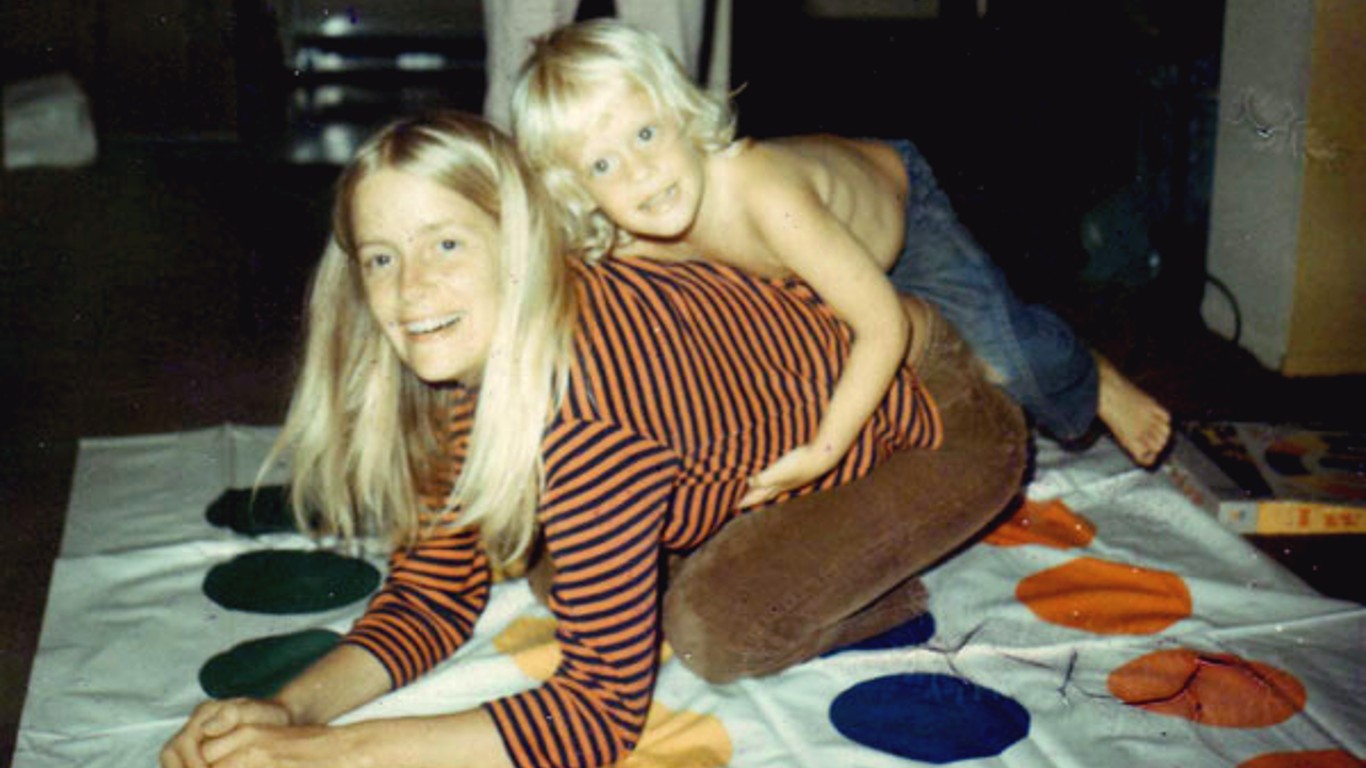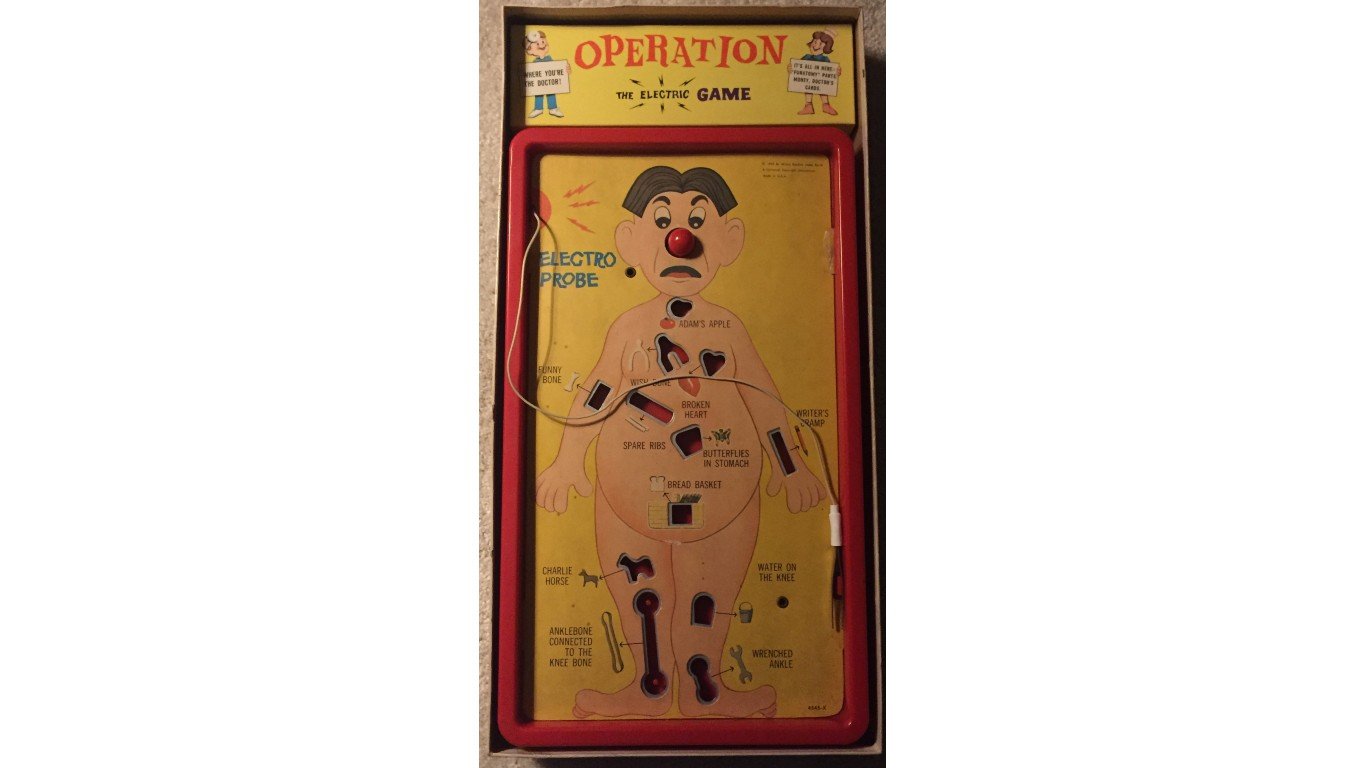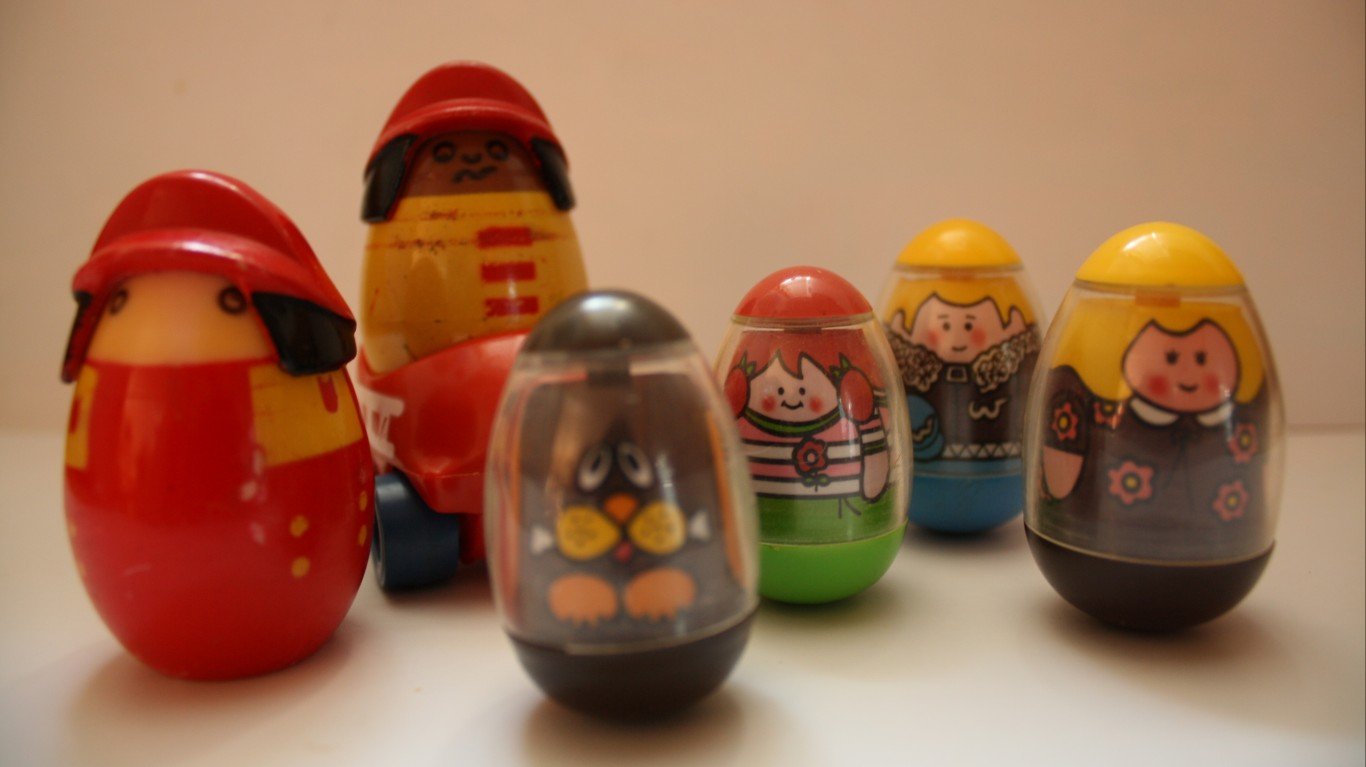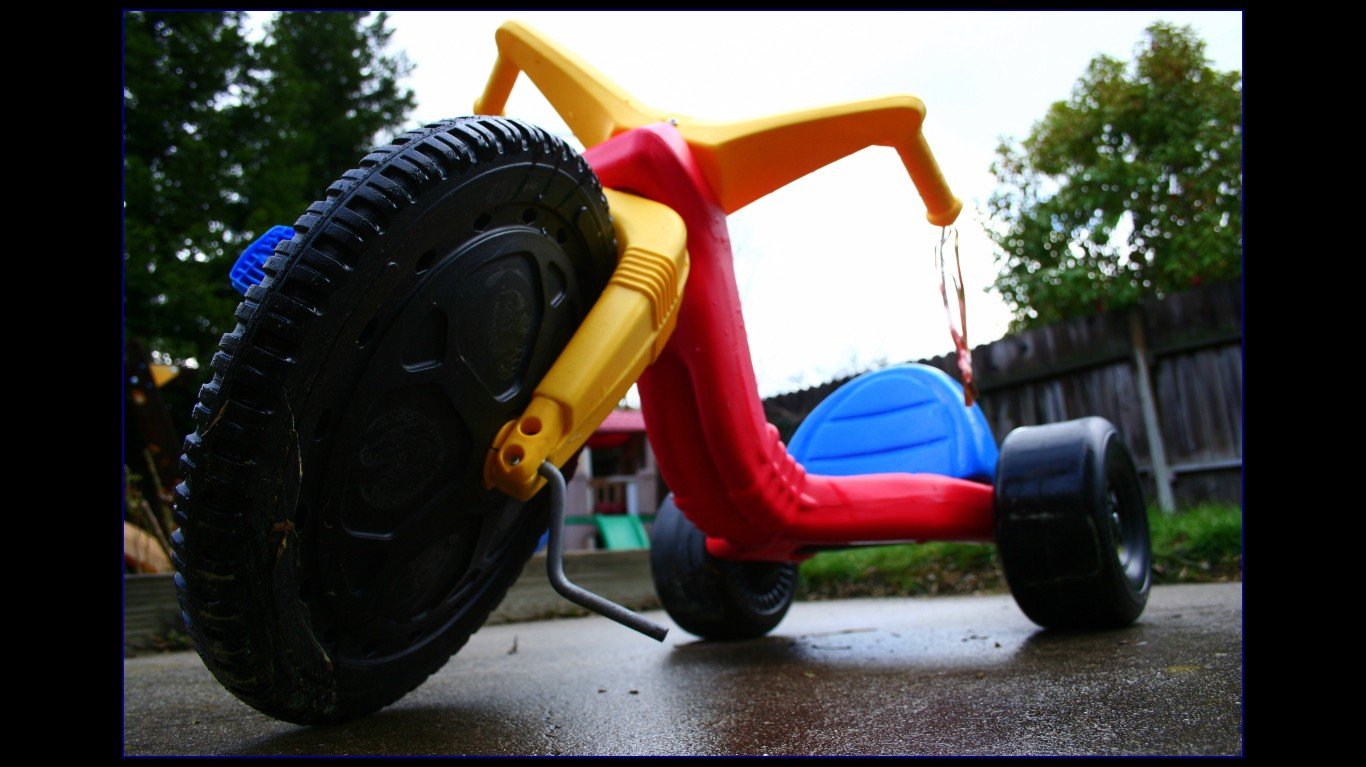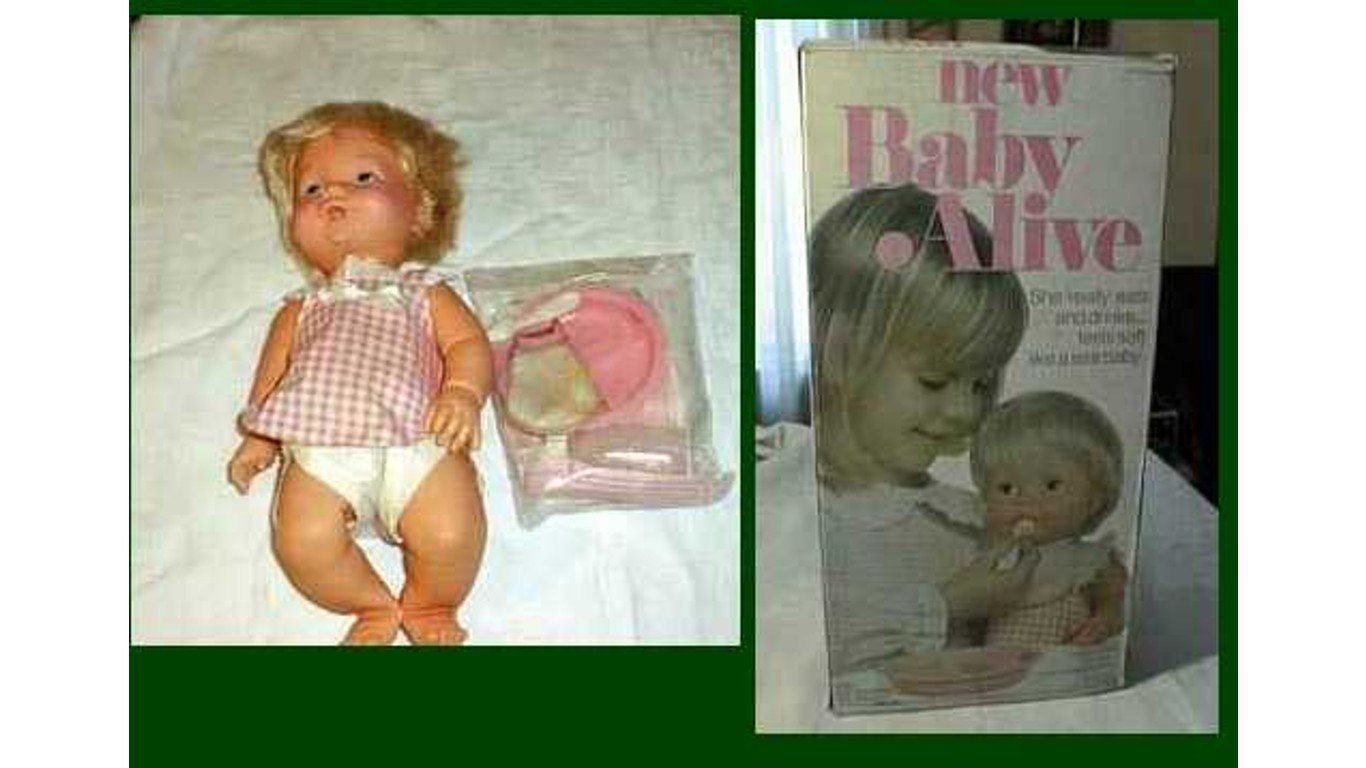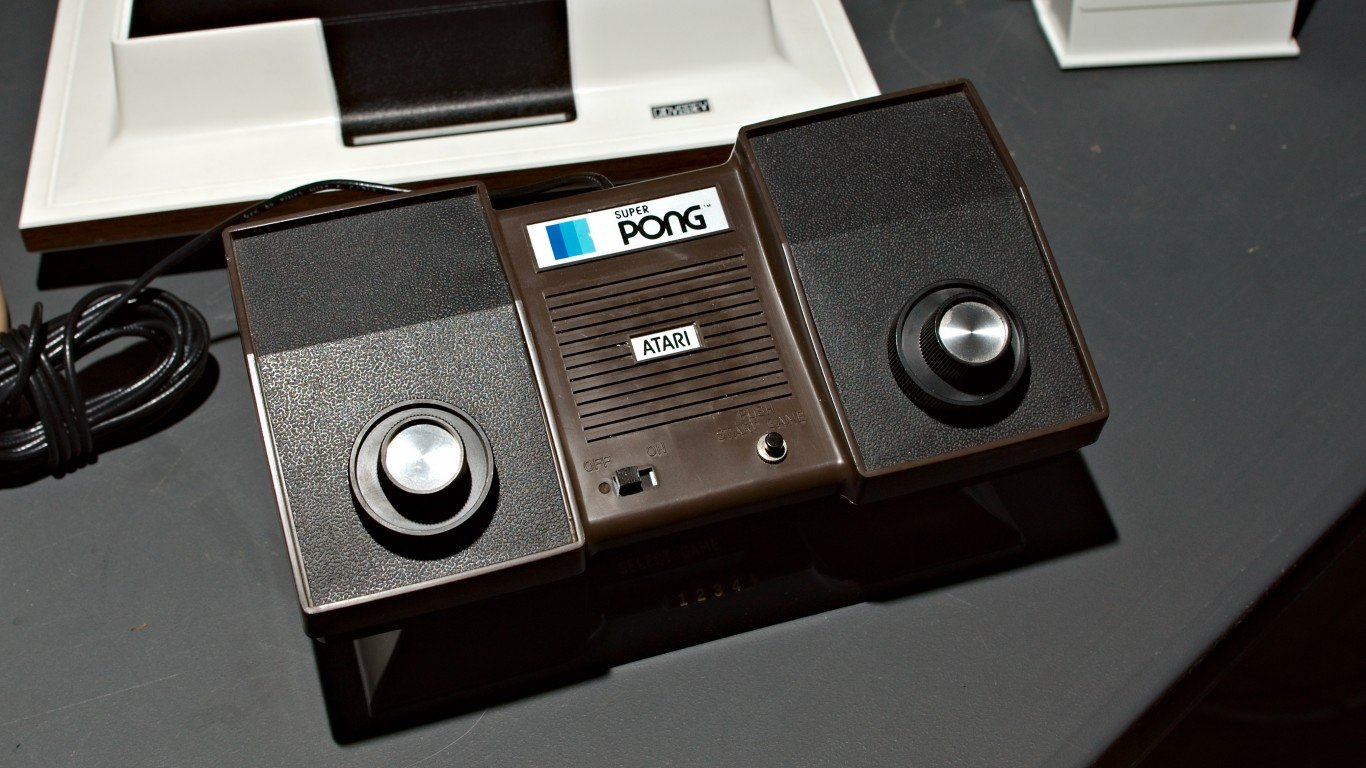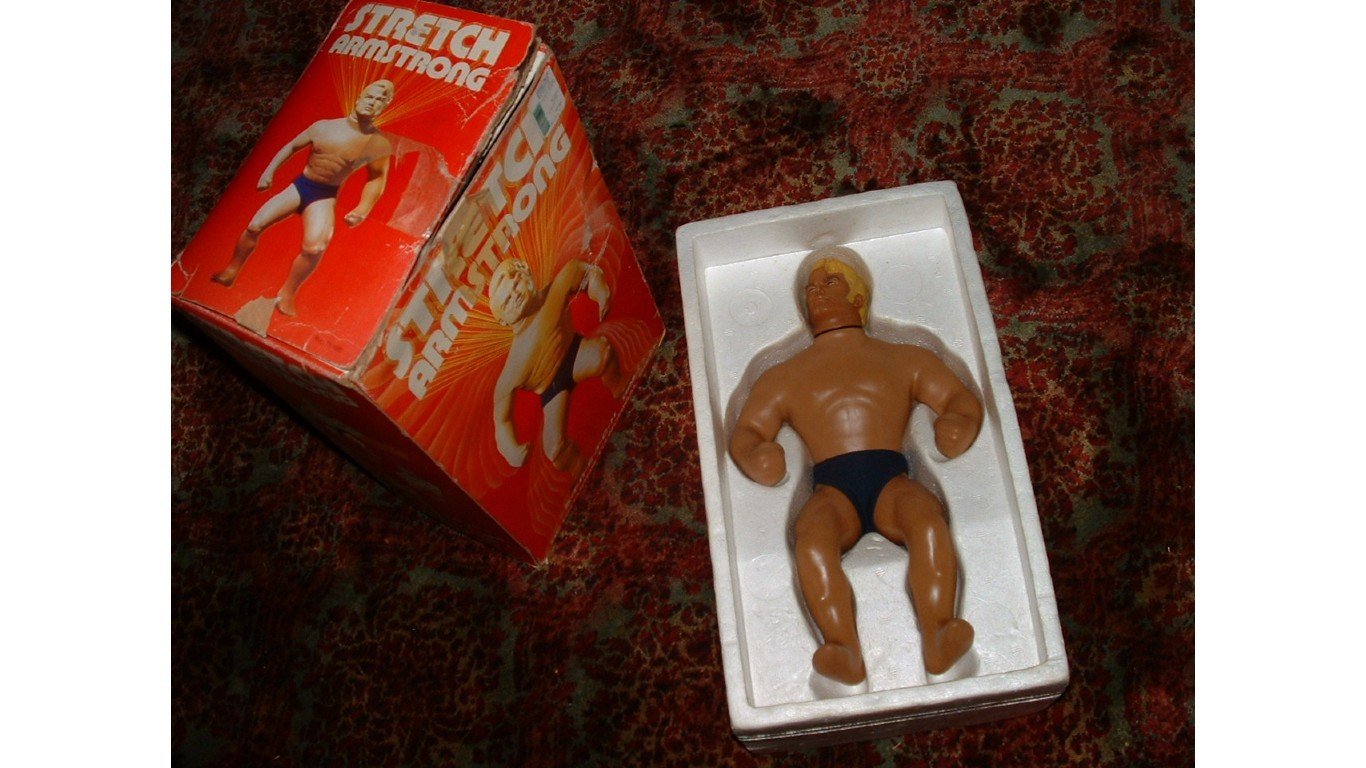Every year, a new crop of cutting edge children’s toys hits the market. Of course, what seems technologically advanced changes every year. While 2022 saw mini foam drones, Star Wars Lola robots, and toddler gaming chairs, earlier decades saw a game originally deemed to racy to sell, action figures that could stretch over a yard long, and baby dolls that could eat and dirty their diapers. (These were the biggest fads of the last 100 years.)
To compile a list of 15 of the most popular toys when Gen-Xers – those born between 1965 and 1980 – were kids, 24/7 Tempo consulted the archives of companies such as Hasbro; data curated by The Strong National Museum of Play; encyclopedia sources such as Britannica; and media outlets including Reader’s Digest, The New York Times, Time, Good Housekeeping, and Smithsonian. 24/7 Tempo exercised editorial discretion in making the final selection where appropriate.
Generation X saw the first home gaming consoles, including Atari’s seminal Pong. They were also the first to play with many electronic toys and board games that are still popular today, including Simon and Operation. Other best-selling non-electronic toys from the late ‘60s and ‘70s include Twister, Battleship, and Hot Wheels cars.
Some of these games and toys were released by Milton Bradley, which was acquired by Hasbro in 1984, and are now sold under the Hasbro label. Others were distributed by big names like Louis Marx, Mattel, and Parker Brothers. While many are still available today, a few are no longer in production, and have become valuable collectors’ items. Here are 25 discontinued classic toys you can probably still find.
Operation
> Made by: Hasbro
Released by Milton Bradley in 1965, this electronic board game tests fine motor skills as players become doctors and perform various procedures on a patient. It has remained a family favorite and has been upgraded numerous times to the format available in stores today.

Twister
> Made by: Hasbro
A classic up-close-and-personal party game, Twister almost didn’t make it past its first production run. After Sears decided the game was too racy to carry since it brought players in intimate proximity to each other, Milton Bradley halted production. Soon afterwards, though, Johnny Carson and actress Eva Gabor played Twister on air, causing it to sell out the next day at the one New York store that carried it. Milton Bradley subsequently sold three million Twister games in 1967 alone.
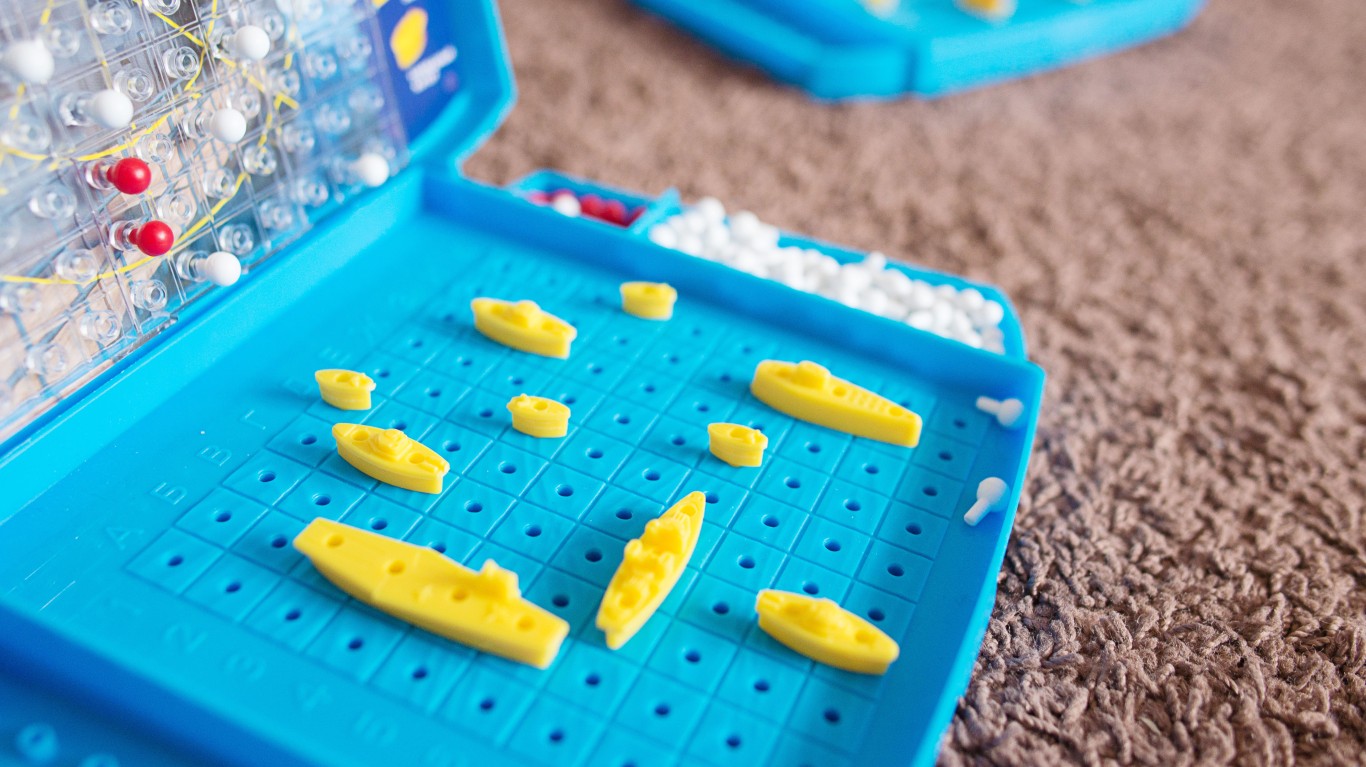
Battleship
> Made by: Hasbro
Originally a pen and paper game dating back to WWI, Battleship was first manufactured as a board game in 1967 by Milton Bradley. This strategy guessing game where players seek to sink their opponent’s naval fleet has retained its appeal for over 50 years.
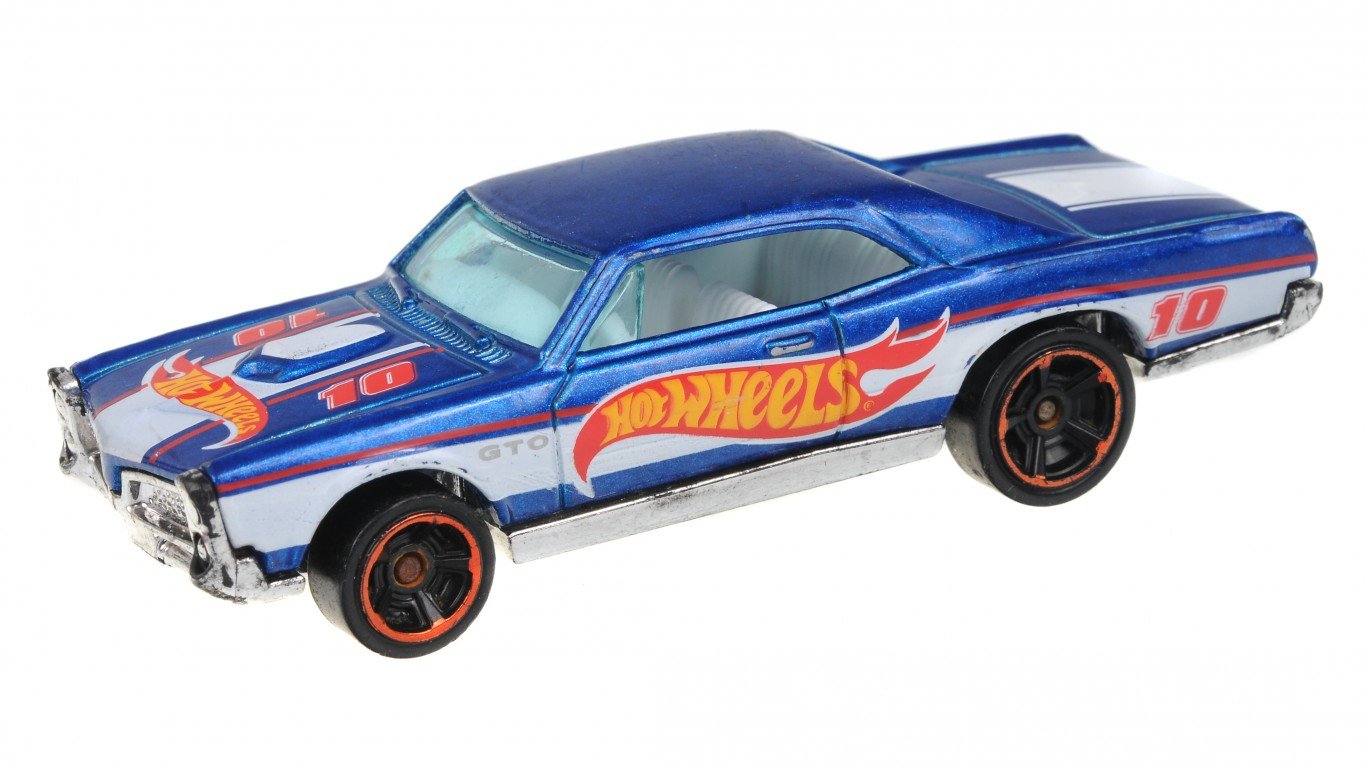
Hot Wheels
> Made by: Mattel
Seeing the popularity of English Matchbox brand cars, Mattel’s co-founder ordered the design and production of miniature muscle cars that would take after the custom-altered street versions popular in California. Hot Wheels introduces new vehicles each year, and over 800 models have been released since 1968.

Snoopy the Astronaut
> Made by: Determined Productions
Riding on the success of the Apollo 11 moon landing, this Peanuts toy, released in 1969, featured Snoopy in a spacesuit. Snoopy was NASA’s safety mascot during the Apollo missions, and the pocket-sized doll was a sought-after gift as soon as it hit shelves.
Nerf ball
> Made by: Parker Brothers
Non-expanding recreational foam, or NERF, balls were marketed as the world’s first balls suitable for indoor play – safe to use in homes without causing major damage to walls and decor. The toys became a hit in the early ’70s – especially the football-shaped foam ball introduced in 1972.
Weebles
> Made by: Romper Room
“Weebles wobble, but they don’t fall down,” was the slogan for these round-bottom tilting dolls that hit shelves in 1969. Originally offered as a nuclear family set with six characters, these dolls were built with a counterweight system that made it impossible for them to fall over.
Big Wheel
> Made by: Louis Marx Company
This economical plastic tricycle was a hit with parents, who appreciated the modest price (ranging from $11 to $18, depending on the model) and the stability afforded by the low frame that was nearly impossible to flip. It remained a recognizable household brand throughout the ’70s, ’80s, and ’90s.
Baby Alive Doll
> Made by: Hasbro
The Baby Alive doll, first released by Kenner in 1973, was outfitted with a movable mouth that could be spoon fed food from packets that were mixed with water. The food would then move through the doll and end up in its removable diaper. The original doll was incredibly popular in the mid ’70s, and the first talking Baby Alive was introduced in 1992.
Pong
> Made by: Atari
The first video game to become a huge commercial success, this simple table tennis simulation started as an arcade game. Noting its popularity, Atari released a home console version in 1974. Pong has been credited with helping to establish the video game industry.
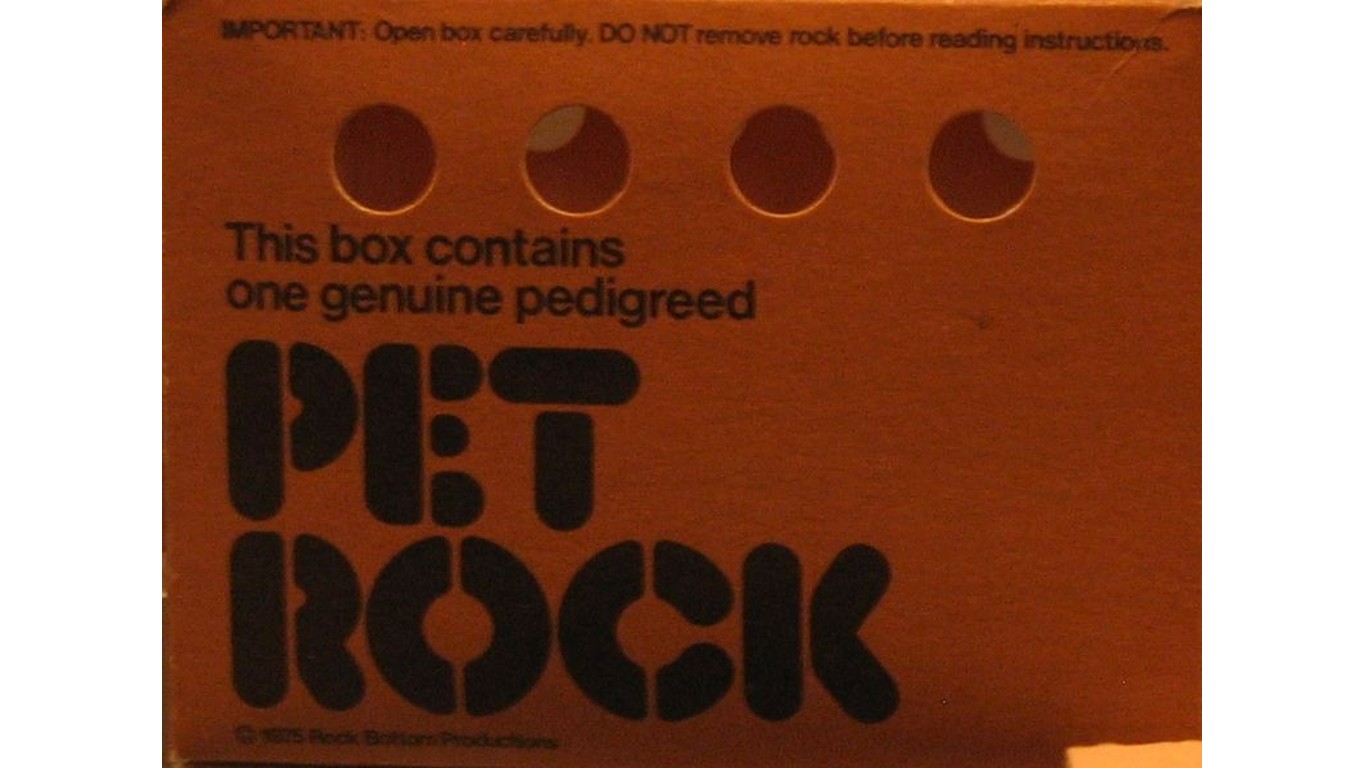
Pet Rock
> Made by: Gary Ross Dahl
This novelty gag gift, literally a rock that couldn’t perform any entertaining function, became a surprise hit in 1975. With a carton that contained breathing holes, a soft bed of straw, and care and training instructions, the Pet Rock brought some much needed humor to a post-Vietnam and Watergate-era American society.
Stretch Armstrong
> Made by: Kenner/Hasbro
A virtually unbreakable toy, this strong-man action figure could be stretched out up to four feet, afterward bouncing back to its original shape without any signs of wear. The latex doll filled with colored corn syrup became a best-seller in 1976.
Mattel Football
> Made by: Mattel
This handheld, battery-powered electronic game was the second released by Mattel (the first being Auto Race). Despite getting a slow start and nearly being discontinued, the game went on to sell over 500,000 units a week at its height.

Star War Figures
> Made by: Kenner
When the original “Star Wars” (now retitled “Star Wars IV: A New Hope”) came out in 1977, Star Wars action figures sold out almost immediately. By Christmas of that year, the demand was so high that toy company Kenner resorted to selling “Early Bird Certificate Packages” that promised to ship four characters as soon as they were produced, so that parents would have something to give their eager children.
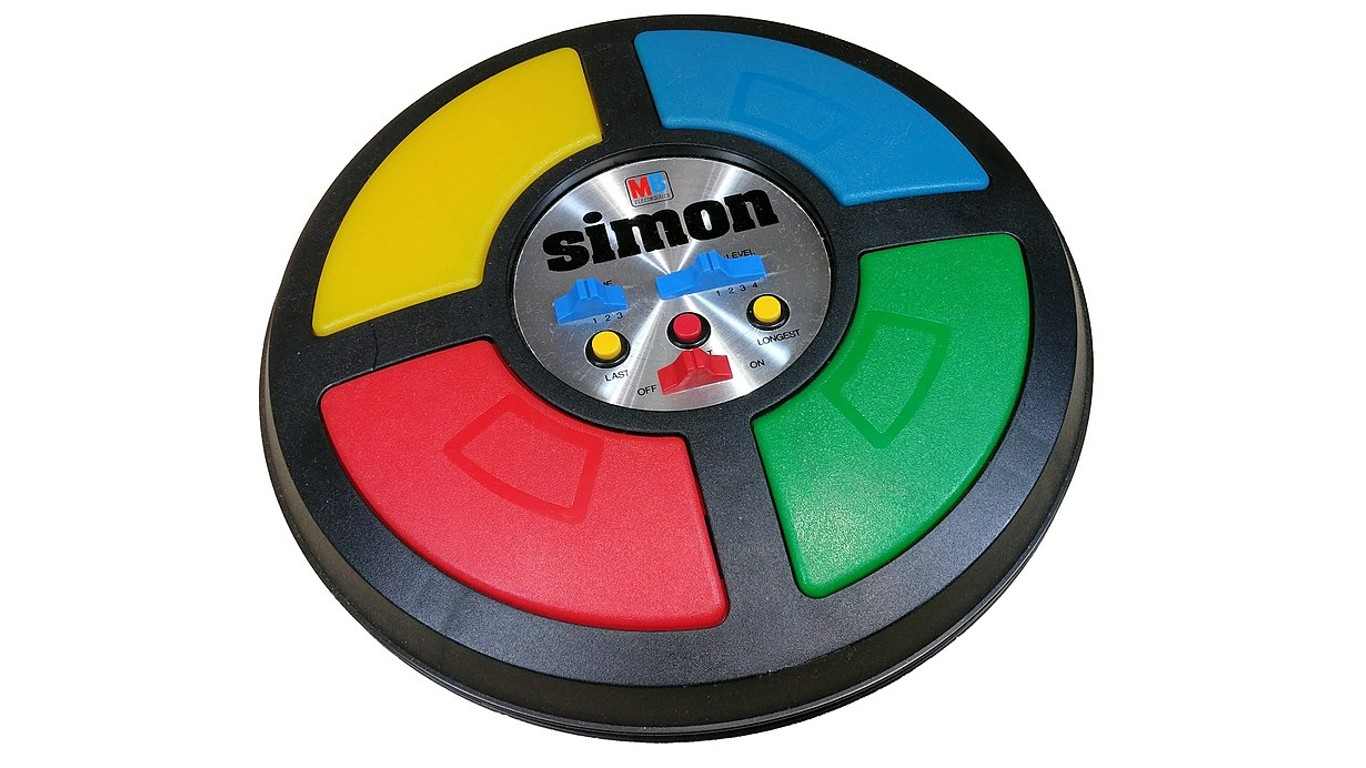
Simon
> Made by: Hasbro
This electronic game tests short term memory by playing a series of musical notes that the user must replicate by pressing four colored buttons corresponding to the notes. Simon was an instant success upon its release, peaking in the ’80s, but it continues to sell to this day.
